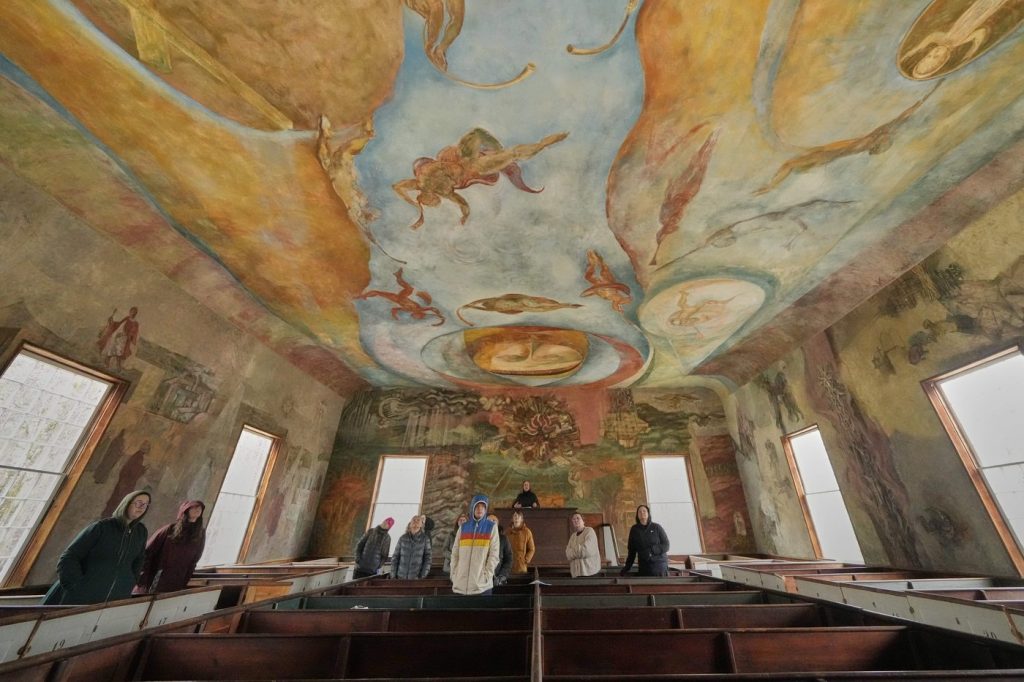SOLON, Maine (AP) — The South Solon Meeting House, located in the picturesque town of Solon, Maine, presents a serene exterior typical of New England churches. This boxy white structure, adorned with a single steeple and encircled by an old stone wall, may appear ordinary from the outside. However, it hides a remarkable artistic treasure within its walls: a collection of 70-year-old fresco murals that have led some in Maine's art community to label it as "Maine's Sistine Chapel."
The frescoes, created by a group of young artists in the 1950s, were the result of an initiative by Margaret Day Blake, who discovered the meeting house in disrepair and sought to revitalize it through art. She invited emerging painters from the nearby Skowhegan School of Painting and Sculpture to reinterpret Biblical scenes in a creative exercise that took place from 1952 to 1956. The recent establishment of a website dedicated to these murals by Colby College students has reignited interest in the artwork, which has long been appreciated by visitors. Véronique Plesch, a Colby professor of art and a board member of the local historical society, expressed hope that the meeting house will foster a deeper appreciation for frescoes in public spaces.
With a history dating back to its construction in 1842, the building originally facilitated church services until the 1940s, experiencing periods of inactivity during wartime. The murals feature a wide array of Biblical narratives, including a depiction of "The Last Supper" and the binding of Isaac, where a hooded Abraham prepares to sacrifice his son, reflecting Michelangelo's interpretation of the Great Flood as seen in the Vatican's Sistine Chapel.
Among the 13 original artists, two remain alive today: Sigmund Abeles from New York City and Sidney Hurwitz from Newton, Massachusetts, both in their 90s. They reflected fondly on their experiences painting at the meeting house, with Hurwitz recalling idyllic lunches in the adjacent cemetery. Abeles described the experience as "very special," highlighting the unique creative freedom they enjoyed during the project.
The South Solon Meeting House remains an open community space, free of locks, serving both as a gathering venue and a performance area. Many original features, including box pews designed for smaller individuals from a bygone era, have been preserved. Recently, Plesch delivered a lecture at the meeting house to members of the Maine Art Education Association, illustrating how the deep history and artistic legacy of the building continues to inspire teachers and art lovers alike.
Suzanne Goulet, a local high school art teacher, remarked on the ongoing impact of the frescoes, noting that they serve as a source of inspiration for her students. The blend of historical significance, artistic endeavor, and community engagement reflects the meeting house's enduring legacy in the heart of rural Maine.










